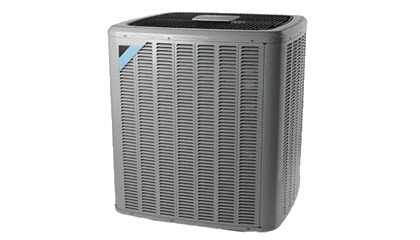
& Heating Systems
A heat pump air conditioning system is an energy-efficient way to heat and cool your home all year round. Basically, it’s an air conditioner that also works in reverse to heat your home in the winter. Heat pumps are an efficient and clean alternative to a gas furnace.
Benefits of Heat Pump Air Conditioning Systems
Save Money - Heat pumps help save you money on energy costs compared to traditional heating and cooling systems, while typically being cheaper than installing both an AC unit and a separate gas furnace.
Energy Efficient -The ability to either heat or cool a home, combined with the fact that heat pumps move heat rather than create heat, makes heat pumps an excellent option for consumers interested in energy efficiency.
Help the Environment - Propane and natural gas heating systems emit greenhouse gases into the atmosphere when used. Heat pumps produce zero harmful greenhouse gas emissions and help protect our environment.
Safer - Heat pumps also eliminate the risk of carbon monoxide poisoning and problems that can occur with natural gas or propane.
Health and Wellness - Heat pumps provide both good air filtration, as well as dehumidification. Improved indoor air quality is great for the whole household, but especially for those with allergies or sensitivities to air pollution.

Comfort and Control - Certain heat pump technologies enable heating and cooling by zone, providing households with the control to adjust temperatures as needed for maximum comfort.
Flexibility - With several options to choose from, there is flexibility in selecting the best type of heat pump solution, based on household needs and savings goals.


Heat pump air conditioning systems work by moving heat. Because they both heat and cool, they save energy and money over their lifetime while improving indoor air quality.
Heat Pump Space Air Conditioning and Heating System
Types of Heat Pump Air Conditioners
Central Air Conditioning Heat Pump | The most common heat pump option. An outside heat pump unit works in conjunction with an indoor air handling unit to cool or heat air, acting as an air conditioner in the summer and a heating system in the winter.
Variable Refrigerant Flow (VRF) System | Utilizes the industry’s latest technology for minimal energy loss. A VRF system allows one outdoor condensing unit to be connected to multiple indoor units, providing ultimate physical or zone control for each area.
Single-Zone Mini-Split System | When flexibility is needed, or space is tight. With small, ductless units, heating, and cooling can be managed by room or area, allowing for better energy management while avoiding potential energy loss within ductwork.
Multi-Zone Ductless Mini-Split System | A ductless system is a great solution for homes without a well-designed central heating/cooling system. Instead of renovating the home’s existing ductwork, a ductless system can provide efficient heating and cooling at a lower operational cost.
How Does a Heat Pump Work?
As part of a home heating and cooling system, a heat pump transfers heat from one place to another.
A heat pump is a mechanical refrigeration system that can be reversed to either heat or cool a living space. When it’s cold outside, a heat pump extracts outside heat and transfers it inside. When it’s warm outside, it reverses direction and acts like an air conditioner, removing heat from your home.

Tips for Converting to a Heat Pump Air Conditioning System
For Southern California’s warmer climate, consider the recently adopted SEER2 and HSPF2 ratings when selecting a new heat pump. SEER stands for seasonal energy efficiency ratio and measures cooling efficiency. HSPF stands for heating seasonal performance factor and measures heating efficiency. To ensure high efficiency, look for ENERGY STAR®-certified units.
Here are some additional tips for consideration:
- In warmer climates, SEER may be more important than HSPF since it measures cooling efficiency. In colder climates, focus on getting the highest HSPF feasible, since it measures heating efficiency.
- The size you need depends on the size, layout, and insulation of your home.
- Consider installing an HP ahead of time when the current system is near the end of its useful life (10-15 years).
Sources
Residential Building Electrification in California, Energy, and Environmental Economics, Inc., April 2019
https://news.energysage.com/pros-cons-electric-water-heaters/
https://www.energysage.com/green-heating-and-cooling/air-source-heat-pumps/costs-and-benefits-air-source-heat-pumps
https://www.energystar.gov/products/heating_cooling/heat_pumps_air_source
https://www.energy.gov/energysaver/heat-pump-systems/air-source-heat-pumps
©2019 Southern California Edison. All rights reserved. R-2279-V1-1019
For More Information
Learn more about Home Electrification, potentially thousands of dollars in incentives, and pre-certified contractors in your area at switchison.org.
